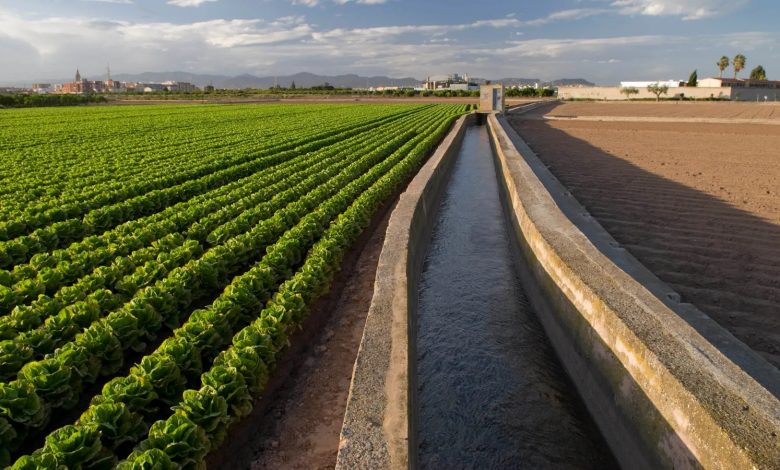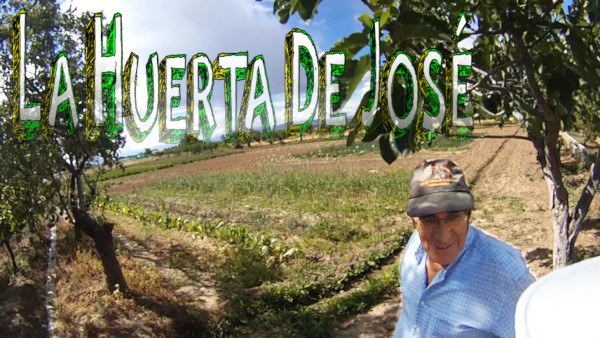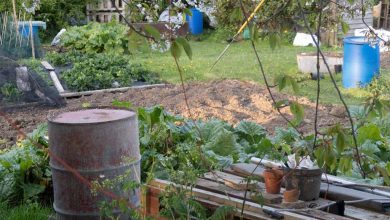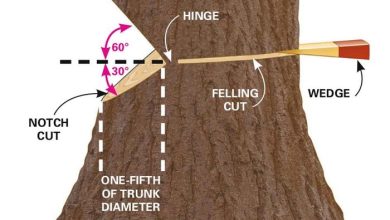A traditional vegetable garden: visiting LA HUERTA DE JOSÉ

Good morning everyone and welcome to this article about a traditional garden that is so special to me. Today I have to talk about «my godfather» of orchard José and the orchard management master class that he gave me back in March 2014.

José is a natural farmer from La Pueblanueva and since I was little I have his memory coming into the house with authentic mountains of tomatoes that tasted like tomatoes (forgive the topicazo), onions as fists, zucchini as arms, etc. Which ended up being transformed into exquisite gazpachos and preserves. Hence, when I started with my garden, I did not hesitate for a moment to call him so that he could explain everything to me a little, where to start, what to plant, what to do, etc. Since he is a true doyen in the matter, having spent many years producing healthy products of supreme quality.
The traditional garden of José
When I told him that I was going to start with an orchard, my dear godfather did not take a second to meet me at his house to visit his orchard and so we undertook, in his mythical C15, the trip to the Tagus river valleys, lands irrigated by the water from the Castrejón reservoir about 20 minutes from my town.
These orchards are a totally different thing from the one you are used to seeing on this website. There are no raised terraces, no graffiti, or anything that gives the garden that urban warden guaper vibe that is what is going on now. José’s garden is made up of a shed for tools and seeds and a plot of land divided into several plots based on the channeling of water (the crops that need more water are closer to the irrigation ditch) and the crop rotation elaborated by the horticulturist himself (about 1/3 of the land lies fallow for a year while the rest of the orchard is in production).
The land is slightly inclined to favor irrigation, which in this case is not dripping as you are accustomed to seeing, since such a vast extension would make this type of installation impossible. The irrigation of the orchard is done by furrows, this means that around the crops there is a depression through which the water circulates and so when José opens the gate of the ditch near his land, the water circulates freely through those channels until it soaks through complete the soil profile. These irrigations are very controlled in summer, there are shifts for farmers in the area to irrigate at different times and thus make responsible use of the canal water (irrigation by furrows is less efficientthan an dripper when it comes to saving water, but can be a non-wasteful practice if done correctly).
Control of pests and diseases in the traditional garden
The biological control of the garden is also totally different from what can be done in an urban garden. These rural horticulturists do not complicate their lives to put an end to a plague or a disease, I could say that their philosophy fits perfectly into the: «Prevention is better than cure» and therefore they cure the soil around the crop with herbicides to prevent bad diseases from sprouting. herbs and with pesticides the crop itself to avoid the appearance of lice, fly etc…
Curing the garden with chemical products is neither better nor worse, realizing that in a large area that is not divided into raised terraces and there are no paths between the crops, it is more difficult to plan an ecological defense, planting aromatic plants, rose bushes, curing with potash soap etc… And it is simpler (and possibly less risky) to dilute a cap of product in a dosing backpack and take a walk curing the ground.
If you want to know more about the differences between an urban orchard and a traditional one, here is the first report on José’s orchard:
Apart from the differences in management, it is worth visiting an orchard in a rural community because its members are simple and friendly people who perfectly know the sowing dates of each crop, its management and a multitude of tricks and sayings so that you can have the best results. The orchards in the cities are very good, but without offending anyone, they do not even remotely have the knowledge about orchards that these people may have, since they have been there all their lives and know everything in detail.
I visited his garden on May 31, 2014 and I was very surprised that there were already a lot of zucchini and tomatoes around when, for example, I had not even started the seedbed. During the rigorous walk, he showed me all the crops along with the most recommended sowing dates to plant them and gave me many tips so that everything would be perfect.
If you want to see the garden in all its splendor you have the second report:
Little more, to tell you that José also knows a lot about trees, his plot was full of fruit trees such as pear or plum trees, many of which he had grafted with different techniques to increase their production or avoid any pest. The truth is that it caught my attention and maybe one day I will tell you more about arboriculture and grafting.
A greeting and do not stop enjoying the traditional orchards of the town.



![Photo of Honeysuckle Cultivation: [Cultivation, Irrigation, Care, Pests and Diseases]](https://www.complete-gardening.com/wp-content/uploads/2022/08/honeysuckle-cultivation-cultivation-irrigation-care-pests-and-diseases-390x220.jpg)
![Photo of Sowing Broccoli: [Care, Cultivation, Irrigation, Substrate and Pests]](https://www.complete-gardening.com/wp-content/uploads/2022/08/sowing-broccoli-care-cultivation-irrigation-substrate-and-pests-390x220.jpg)